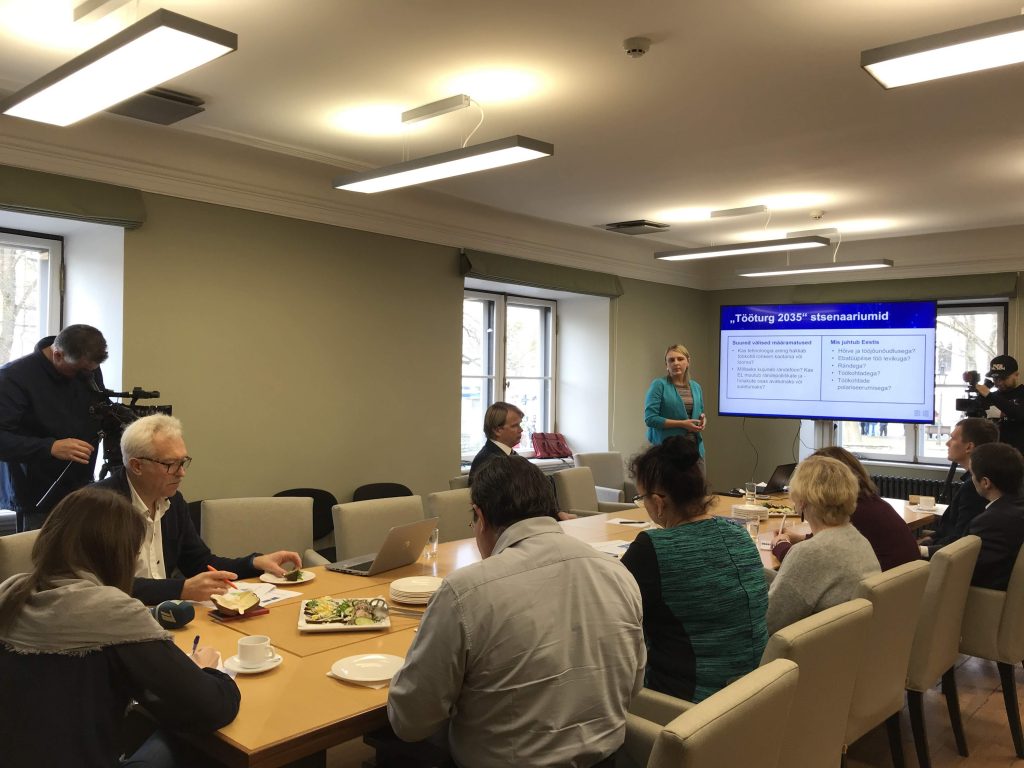The scenarios of “Labour Market 2035” focus on the key issues of the future of Estonia
The study into the future of the labour market, conducted by the Foresight Centre, has been going on for nearly one and a half year, and is coming to a close. The final report of the project, “Labour Market 2035”, including four scenarios, has been completed.

The starting point for creating the scenarios was the need to understand what developments we may be facing in the future. In the course of several seminars and long discussions, the impact of technological development on the nature and creation of jobs in the world, and openness to labour migration (from third countries) in the European Union were selected as the two major external factors affecting the labour market.
The scenarios reflect an alternative but possible future situation, and are not the future forecast for the Estonian labour market. Each of the scenarios is an amplified version of the realisation of a specific development path and gives us good discussion material on what we should do when one or the other development begins to dominate, so that we were able to amplify suitable developments and halt unsuitable developments at the right moment.
For example, technological development creates favourable conditions for business and the creation of new, high added-value jobs in the scenarios “Talent Centre Tallinn” and “Self-Developing Estonia”, but the existence of talents and labour force becomes decisive for economic development opportunities and begins to shape the nature of the scenario. The scenario “Talent Centre Tallinn” is characterised by fast economic and technological development, but at the same time also by increasing inequality in both people’s incomes and between different regions of Estonia. In the scenario “Self-Developing Estonia”, society is more equal and homogeneous, but there are not enough knowledge and skills for development, and our economic growth never quite catches up with the countries that are attractive to international talents. What is more important: slow and steady development, or fast and uneven development?
Complicated challenges are offered in scenarios under which jobs are replaced by automated solutions all over the world as a result of technological development, and where the effect of the emergence of new jobs is smaller. In “Global Village of Migrants”, Estonia becomes an immigrant country for workers doing low-skilled work, and investment into technology is postponed until it becomes the question of the survival of companies. However, the scenario “New Labour World” does not favour labour migration. On the one hand, automating may indeed suit to the context of diminishing population and provide an opportunity for totally reshaping the social value system, but on the other hand, if Estonia’s exporting industry disappears as a result of that, economic possibilities for long reflection are poor.
These are just some of the questions that can be discussed on the basis of these scenarios. The scenarios are therefore not the end-product, but the starting point for important discussions about smart shaping of the employment, labour market and economic policy.
Latest news
-
27.06 2025Current low birth rate will lead to up to 1.3 billion euros less tax revenue in the future
In its new short report “The impact of population ageing and low birth rate on long-term state revenue and expenditure”, the Foresight Centre notes that the lower than projected birth rate will reduce government spending on family policy and education, but in the long term, it will mean up to 1.3 billion euros less in tax revenue.

 An independent think tank at the Riigikogu
An independent think tank at the Riigikogu